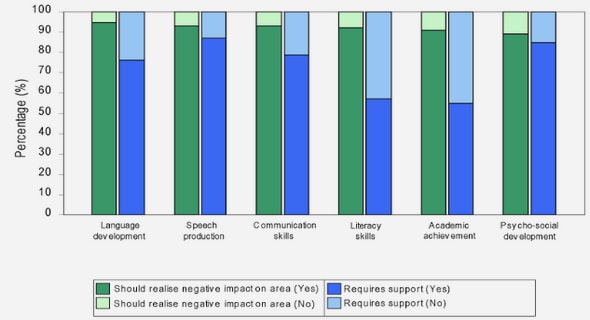(Downloads - 0)
For more info about our services contact : help@bestpfe.com
Table of contents
1 Introduction and Literature Review
1.1 Introduction
1.2 Literature Review
1.2.1 Potential yield
1.2.1.1 Overview of the wheat physiology: growth and development
The wheat development until anthesis
The grain filling phase
The source/sink manipulations and grain yield limitation .
1.2.1.2 Fate of Nitrogen and Carbon fluxes during the senescence
The end of nitrogen uptake
Senescence and N remobilisation
Senescence and reduction of carbon assimilation
1.2.1.3 An equation for potential yield
1.2.2 Stress, strain and tolerance of Septoria tritici blotch
1.2.2.1 The Septoria tritici blotch: a biotic stress of wheat crops
Life cycle of Zymoseptori tritici
Plant pathogen interactions
1.2.2.2 Methods for crop control of STB
Breeding for resistance
Avoidance and sanitary measures
Fungicide-based control
1.2.2.3 Quantify the tolerance of Septoria tritici blotch
1.2.3 Identification of STB tolerance traits
1.3 Rationale, objectives and hypotheses
References
2 Materials and methods
2.1 Introduction
Introduction
2.2 Overview of the study methods
2.2.1 Data mining
2.2.2 Field experiment 2014-15
2.2.3 Glasshouse experiment 2014-15
2.2.4 Field experiment 2015-16
2.3 Selection of genotypes or cultivars
2.4 Growth analysis
2.5 The Healthy Area Duration (HAD)
2.5.1 Leaf lamina area and green leaf lamina area
2.5.2 Post-heading green leaf lamina area kinetics
2.5.3 Healthy Area Duration
2.6 Source / sink ratio and tolerance
References
3 Genotype and environment eect on senescence and grain weight
3.1 Introduction
3.2 Materials and methods
3.2.1 Dataset, response and explanatory variables
3.2.1.1 E, G and GE
3.2.1.2 The response variables: the senescence timing and the Thousand Grain Weight (TGW)
3.2.1.3 Explanatory variables
3.2.2 Statistical analysis
3.2.2.1 Classification of explanatory variables by Random Forest models
3.2.2.2 Linear model selection
3.2.2.3 Random eects: E, G and GE
3.2.3 External validation
3.2.4 Softwares
3.3 Results
3.3.1 Identifying the main explanatory variables using Random Forest modeling
3.3.1.1 Fitting the Random Forest models
3.3.1.2 Ranking of explanatory variables according to their contribution
3.3.2 Multiple regression models
3.3.3 Identifying the origin of G, E or GE
3.3.3.1 Variance component analysis
3.3.3.2 Partial regressions
3.3.4 External validation
3.3.4.1 Validation of the Random Forest models
3.3.4.2 Validation of the linear models
3.4 Discussion
3.4.1 Method
3.4.2 Senescence timings
3.4.3 The TGW
3.4.4 Hypotheses to improve tolerance of STB
4 Field experiment at Hereford, 2014-15
Abstract
4.1 Introduction
4.2 Materials and methods
4.2.1 Genotypes screened for tolerance
4.2.2 Experimental design and treatments
4.2.3 Crop measurements
4.2.4 Data analysis
4.3 Results
4.3.1 The tolerance grade of the genotypes
4.3.2 Variability of grain filling source traits
4.3.3 Variability of grain sink traits
4.3.4 Source-sink balance
4.3.5 Tolerance prediction using source and sink traits
4.4 Discussion
4.4.1 Tolerance and yield
4.4.2 TGW was co-limited by source and sink
4.4.3 Low source limitation is a genotype tolerance trait
4.4.4 The grain source?
4.4.5 Tolerance estimation in healthy crops
4.5 Conclusion
4.6 Acknowledgements
References
5 Glasshouse experiment at Grignon, 2014-15
5.1 Introduction
5.2 Materials and methods
5.2.1 Experimental design
5.2.1.1 Genotype materials
5.2.1.2 Obtaining a field-like crop in the glasshouse
5.2.1.3 Experimental treatments
5.2.1.4 Growth analysis
5.2.2 Data analysis
5.2.2.1 Population settings
5.2.2.2 The grain yield
5.2.2.3 The Healthy Area Duration (HAD)
5.2.2.4 Dry matter weight and Nitrogen amounts
5.2.2.5 Tolerance estimation
5.2.3 Statistics
5.3 Results
5.3.1 From source:sink characterisation to tolerance
5.3.1.1 Development rate
5.3.1.2 The source traits for grain filling
5.3.1.3 The grain sink traits
5.3.1.4 Relation between the grain yield and HAD
5.3.2 Analysis of dry-matter and nitrogen balance behaviour of cultivars
5.3.2.1 Dry-matter fluxes
5.3.2.2 Nitrogen fluxes
5.4 Discussion
5.4.1 Obtaining a field-like canopy in the glasshouse
5.4.2 Traits associated with the putative tolerance of the genotypes.
5.4.3 GNe tolerance of the genotypes
5.4.4 Nitrogen and tolerance of the genotypes
5.5 Conclusion
5.A Appendix
5.A.1 Composition of nutrient solution
6 Field experiment at Sutton Bonington, 2015-16
6.1 Introduction
6.2 Materials and methods
6.2.1 Experimental design and treatment
6.2.2 Measurements
6.2.3 Data analysis
6.2.3.1 Senescence kinetics and healthy area duration
6.2.3.2 Tolerance/intolerance
6.2.3.3 Statistics
6.3 Results
6.3.1 Development rate
6.3.2 The sources for grain filling
6.3.2.1 Leaf area characterisation
6.3.2.2 The senescence parameters
6.3.2.3 The healthy area duration
6.3.2.4 Alternative sources: the dry matter remobilisation
6.3.3 The grain sink
6.3.3.1 Yield and yield losses
6.3.3.2 Yield and grain number
6.3.3.3 Grain weight
6.3.4 Source-sink relationship, HAD and yield
6.3.5 Tolerance
6.3.5.1 Cultivar tolerance estimation
6.3.5.2 Tolerance and healthy crop traits
6.4 Discussion
6.4.1 Range of potential tolerance traits
6.4.2 Insights on the estimation of tolerance
6.4.3 Main results on tolerance and tolerance traits
6.5 Conclusion
6.A Appendix
6.A.1 Healthy trait correlation with tolerance estimates
7 Discussion
7.1 Highlights of the results
7.2 The range of source/sink balance generated
7.3 The quantification of tolerance and the scale
7.3.1 Limits of the single slope-based estimation of tolerance
7.3.2 Improve the tolerance estimation
7.3.3 The grain scale relevance
7.4 The STB-tolerance traits
7.4.1 Comparison of the experimental results
7.4.2 Tolerance traits
7.4.3 Grain-source availability
7.4.4 Interaction between tolerance traits
7.5 Environment eect
7.6 Tolerance and trade-o
7.7 Perspectives
8 Synthèse du manuscrit en français
8.1 Introduction
8.2 Les études réalisées
8.2.1 Présentation générale du matériel et des méthodes
8.2.2 Datamining : eets du génotype et de l’environnement sur la sénescence et le poids des grains
8.2.3 Champ 2014-15 (C2015)
8.2.4 Serre 2014-15 (S2015)
8.2.5 Champ 2014-16 (C2016)
8.3 Discussion
8.4 Conclusion
Références



